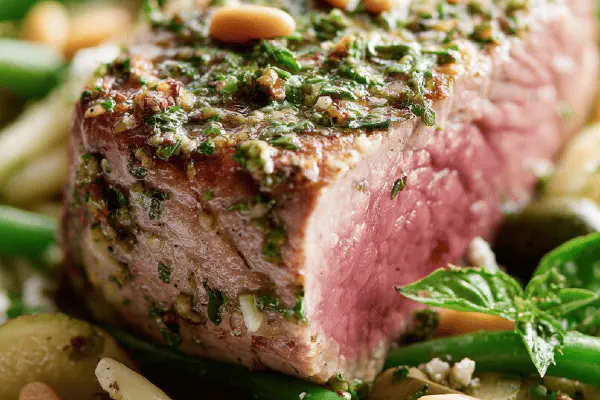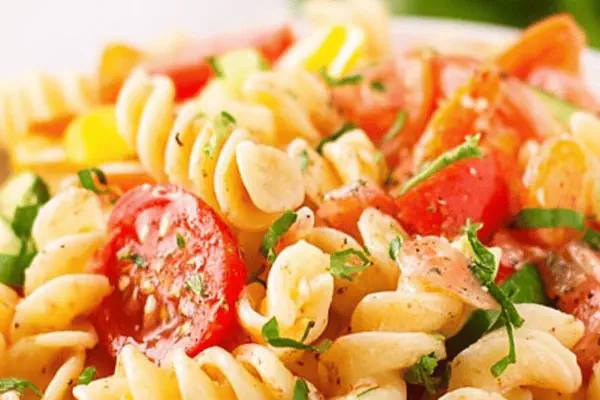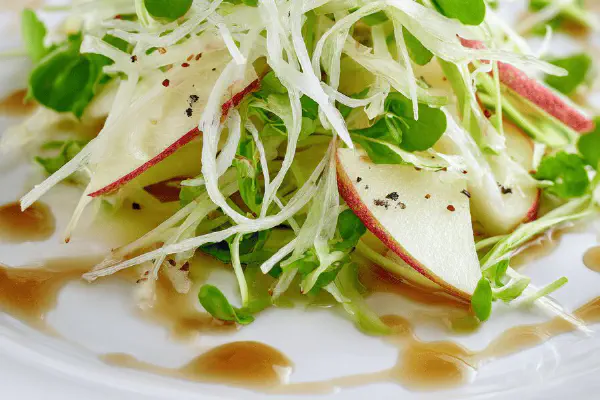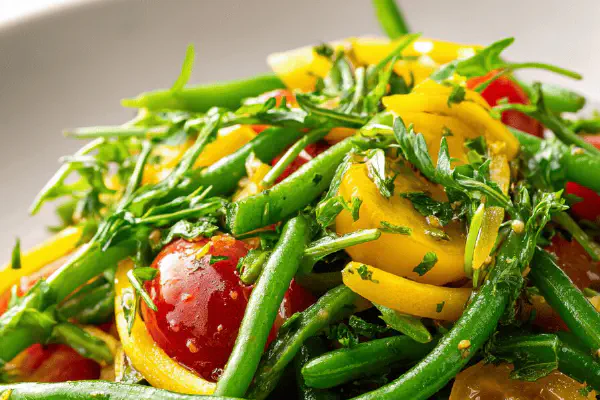Rotini Tuna Avocado Salad
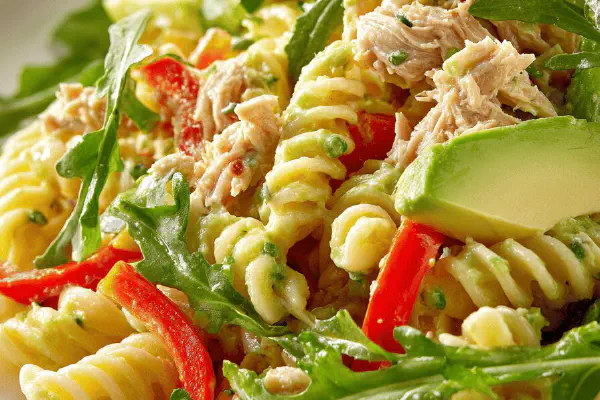
By Emma
Certified Culinary Professional
Ingredients
- 350 g rotinis pasta (increase slightly for extra bite)
- 1 medium green onion, thinly julienned
- 2 ripe avocados, pitted and peeled
- 1 lemon, zest finely grated plus juice divided
- 30 ml mayonnaise
- 2 cans 200 g (7 oz) tuna packed in olive oil, drained
- 1/2 red bell pepper, deseeded and thinly sliced
- 50 g arugula, roughly chopped
- 15 ml extra virgin olive oil (substitutes: light vegetable oil)
About the ingredients
Method
- Bring a large pot of generously salted water to a lively boil. Toss in dry rotinis. Stir occasionally so they don’t stick. Cook until just tender but firm – al dente. Taste test against your teeth — no mush. Drain promptly in colander. Shake off excess water. Toss immediately with a splash of olive oil to keep pasta strands separate; avoids clumping when warm.
- While pasta cooks, plunge green onion strips into cold water bowl. Let sit at least 5 minutes to mellow raw sharpness, draw out some bite. Drain well just before plating; this trick preserves crunch without overpowering the dish.
- In a large mixing bowl, mash one avocado with fork. Add the lemon zest, half the juice, and mayonnaise. Season lightly with salt and black pepper. The mayo adds creaminess without weighing down flavors. Fold in the warm pasta carefully, coating spirals evenly. Warm pasta absorbs flavors better, cooling solidifies dressing on surfaces.
- Slice the remaining avocado thinly. Immediately brush or drizzle with remaining lemon juice to prevent browning. Keep fresh, vivid green color.
- Divide the coated pasta among individual bowls. Top with drained tuna, broken gently into chunks but not smashed. Scatter red pepper julienne and handfuls of chopped arugula over that. Lay avocado slices on top last for visual pop and creamy contrast.
- Serve right away or chill briefly for a cooler salad (but no longer than 30 minutes to keep avocado fresh).
Cooking tips
Chef's notes
- 💡 Start pasta in vigorously boiling salted water. Salt like seawater; it seasons through. Watch bubbles closely. When rotini hits, temp drops. Keep boil lively for exact cook time. Al dente means firm bite—test one by crunching. No mush, no raw starchy chew.
- 💡 Draining tuna matters. Olive oil adds flavor, but fishiness can dominate. Rinse briefly if too strong, then drain well. Tuna chunks should hold texture—break apart gently, not mash. Keeps bite intact in salad. Oil from tuna can sub in dressing oil, but adjust acidity if oil tastes heavy or fishy.
- 💡 Green onion soaking cuts sulfur punch raw slices bring. Cold water soaking 5-10 minutes works best; crunchy but tamed sharpness remains. Drain well or water dilutes dressing. Critical for balance between fresh onion bite and mellow crunch. Skip only if onion mild or very fresh.
- 💡 Avocado mash texture key: fork mashing keeps slight fiber, prevents runny slop blender makes. Lemon zest first releases essential oils before juice added; juice then stops greening and firms texture. Mayo adds creamy coating, prevents watery guac-like separation — careful fold warm pasta before it cools too much.
- 💡 Warm pasta toss with splash olive oil right off drain; hot rotinis soak and coat so dressing clings better. Cold pasta clumps, starch settles, dressing runs off. Layer avocado mash coating first, then final avocado slices on top to keep color bright. Lemon juice brushed on slices prevents browning fast.
- 💡 If bell pepper missing—celery or cucumber julienned keep crisp contrast. Arugula swaps with spinach or watercress for bitterness level tweaks. Storage is tricky—salad chilled max 30 minutes. Avocado browns fast despite lemon. Cover avocado layer tightly or wrap plastic on top surface to slow oxidation.
Common questions
How do I tell when rotini is done?
Bite test best. Grab one hot from pot. Firm not crunchy. No pasty mush. If it falls apart, overcooked. Timing varies by brand. Quick tests keep it tight.
Can I use yogurt instead of mayo?
Yeah, but dressing thins out. More runny. Mix lemon juice carefully. Texture changes. Flavor lighter, but fails creamy cling sometimes. Adjust lemon as it affects sourness.
Why does avocado brown fast in salad?
Oxidation hits once cut exposed. Lemon juice slows browning by acidifying surface. Putting slices on top and brushing juice key. Cover tightly if chilling. Mix avocado early causes dark color too.
How best to store leftovers?
Wrap plastic directly on avocado slices. Store airtight in fridge max one day. Texture softens—pasta absorbs dressing. Not great next day, but still okay. Avoid freezing; kills freshness, mash breaks down.
